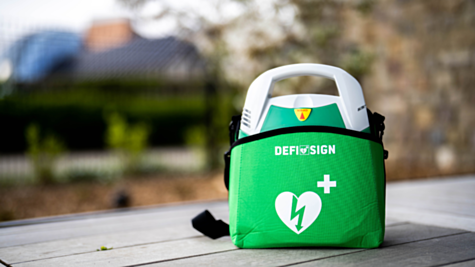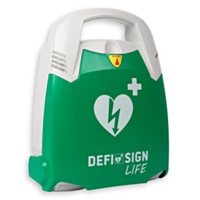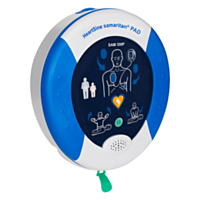Can anyone use a defibrillator?

In emergency situations, swift action is often the key to survival. One of the most powerful tools available for saving lives is the Automatic External Defibrillator (AED). And here is the life-saving secret – anyone can use an AED! In this blog, we delve deeper into the importance of defibrillators and show how simple it is for everyone, even without a medical background, to operate these life-saving devices.
Can anyone use a defibrillator?
Yes, anyone can use a defibrillator. A defibrillator provides clear spoken instructions that guide you step by step through the resuscitation process. This allows even untrained individuals to act effectively in emergency situations. Modern AEDs are reliable, they accurately analyse the heartbeat, and deliver a shock only if absolutely necessary, minimizing the risk of unnecessary interventions. However, we always recommend taking a CPR course. This way, you learn how to perform CPR and use an AED, ensuring that you don't lose precious time during an emergency.
Why is a defibrillator so crucial?
An Automatic External Defibrillator (AED) is invaluable in emergency situations, especially in life-threatening heart rhythm disorders such as ventricular fibrillation or ventricular tachycardia. Time is crucial during cardiac arrest, and a defibrillator significantly shortens the time between the occurrence of cardiac arrest and the administration of a shock.
The widespread availability of defibrillators also contributes to their crucial role. These devices are increasingly found in public places, businesses, and residential areas. This accessibility increases the likelihood that someone nearby can act quickly when cardiac arrest occurs.
Moreover, defibrillators are not only valuable for the general public but also for professional emergency services. While ambulances are on their way to the incident location, a defibrillator can perform life-saving interventions, increasing the chances of successful resuscitation.
In short, a defibrillator is crucial because it provides the ability to respond quickly to life-threatening cardiac arrests, where the difference between life and death can be determined by the speed of intervention. It is not just a medical device but also an instrument that empowers the broader community to actively participate in saving lives.

